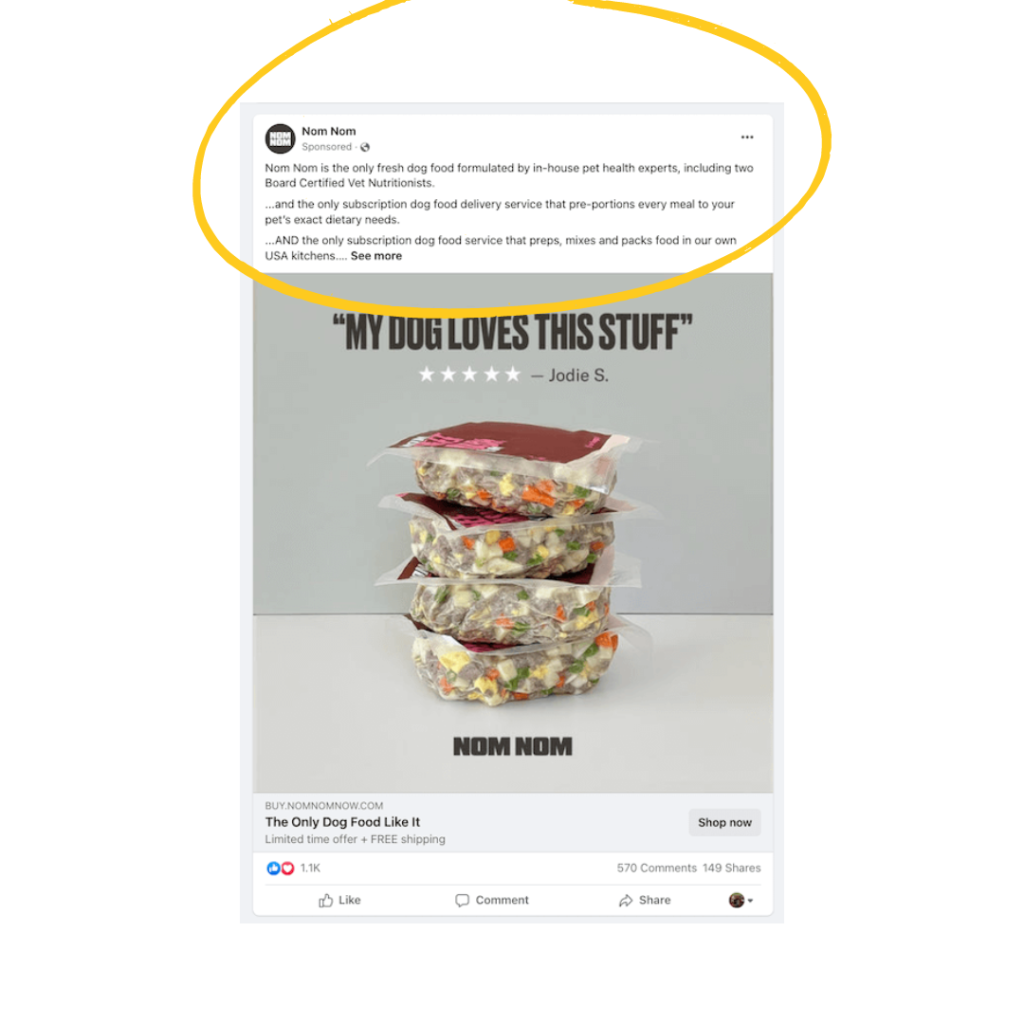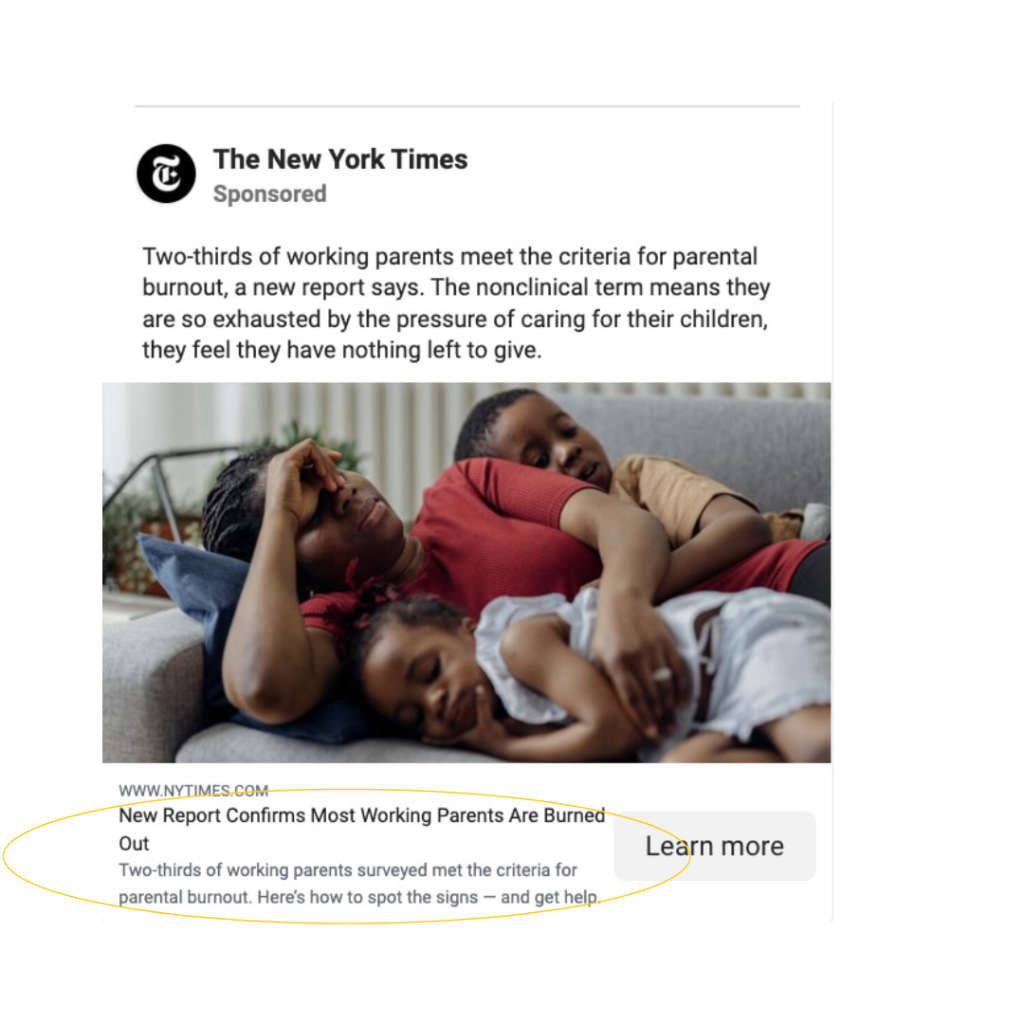The reason most ads don’t convert is that most people are saying the wrong things to the wrong people. Or the offer they are making is unrelated or appealing. Trying to sell something that does not resonates with the pains and struggles of the target audience.
Over the years Facebook’s algorithm for organic reach has dropped drastically, prioritizing personal posts over business content. Nevertheless, taking advantage of paid campaigns and posts boosting can help overcome this limitation and gain visibility for your brand.
Social ad campaigns is no doubt a great way to generate more leads, build brand awareness, and gain email subscribers.
However, creating an ad copy that converts can be a daunting task for many marketers.
Not to worry
In this article I will walk you through a step-by-step guide on how to write an effective Facebook Ad copy that converts so your next ad budget doesn’t go to waste.
But before we dive into it, I will like us to know …
The three main ways to generate traffic to your online business.
Organic traffic: Which is the traffic you gain through SEO, word of mouth and content marketing efforts like social media.
Affiliate: This is when someone else promotes your business through affiliate marketing or endorsement for a commission.
Paid traffic
Paid traffic or advertisment refers to ad spots that you pay for. This is when brands and businesses spend money on advertising campaigns like Facebook Ads or banner ads placed on high-traffic sites. Companies use this method to target the exact type of customers, get more clicks, and create long time customers.
You can agree with me, the social media space is crowded with ads as we scroll pass our feeds every minute. Not to mention the in-stream pop ups on videos and Storeys.
Before you sit down to draft an ad copy, consider…
The Target Audience
No guesswork! Research your target market. 40% of your ad success relies on how you know your target market. Figure out what their pains, fears and frustrations are, and whatever it is that you are selling is well-positioned to solve their problems. If people are not clicking your ads, or buying from your ads, it is because they are not seeing the value. It is your place to show them.
And also check your social media insights and or track your website analytics.
- What are their interest and frustrations?
- Where do they spend time online?
- Where are they located?
- What is their age range?
The better you know your target audience, the easier it becomes to write copy that catches their attention.
How to write a killer Facebook Ad Copy
Follow these 5 frameworks
#1. The Hook/Headline
The hook isn’t just an introduction, it’s a way for you to stir interest and set the tone for the rest of your copy. The hook is part of your ad copy, meaning you should dedicate the most time and attention to it. Be able to grab people’s attention to click and want to read more. A good hook should do what it says it will do. (Not clickbait)
#2. The Ad Body Copy
Ad body copy is the main text in an advertisement. The body text helps readers create interest and connection with your product. The body text outlines the reason people should buy your product or service. And the big benefits and features of these products.
The length and size of your body copy matter
Yes!
It depends on the level of awareness of your brand or business, and the type of ad that it is.
This then takes us to
The 5 Levels of customers awareness
- Unaware Audience
The people here don’t even know they have a problem, let alone a possible solution for their problem.
- Problem-Aware
Here the prospects know they have a problem but do not know if the solution exists.
- Solution-Aware Audience
The audience knows they have a problem and are seeking a solution.
- Product Aware
This audience knows your product, its benefits and features, but hasn’t taken that first step.
- Most Aware
They know what they want. They know where to get it. They are your customers, they have bought from you, again and again.
Tip: The level of customer awareness determines the length of your ad copy. The most aware your customers are, the less educated and preaching your ads copy.
How to write Ad Copy for different levels of customer awareness
- Ad Copy for the Unaware: Your copy needs to educate first. Educate the prospects on the problems they have yet to notice. Use stories and illustrations.

- Ad Copy for the Problem aware: This audience admits they have a problem and want to know more and feel they are understood. Here you want to create copy that empathizes with the prospect’s pain point and provide solutions

- Ad Copy for solution Aware: The prospects are in the evaluation phase, looking for solutions that work. They are edging closer to pulling their wallets. In this ad copy, show social proof, and success stories, build trust and communicate your unique selling proposition (USP)

- Ad Copy for Product Aware: At this stage, the audience is aware of the options including yours and is in an exploring phase. You want to add some incentives to motivate and add scarcity.

- Ad Copy for Most Aware Audience: WOOOOH! You have taken your customer from unaware to becoming a customer. This is the simplest level of Ad copy, because your brand and product is well known to your audience. All you do is present your product for them to buy.

#3. Call to Action (CTA)
CTA’s directly impacts your conversion. The above steps are a waste if you don’t include a strong CTA. Strategic calls to action guide your visitors through the buying journey. It should be clear and easy to understand. Short with a maximum of 3 words.
Example: Buy Now! Learn More, Sign Up
#4. The Ad Creative
This has to do with the images, videos, carousels and other formats of your ad. The Ad image text is often the first and most read. Keep it short and use a powerful hook.
Takeaway: Each ad component should open a loop to make your readers want to click and learn more. The way it works is your creative grabs attention. Then your headline and then your body copy. That’s the process by which people see an ad and the way their eyes go.
#5. The Ad title and description
Provide you with another opportunity to convince your audience why they should go for the opportunity on the display. A short sentence about the value they will gain by clicking on the CTA button. You write your ad title and description at the bottom of your ad creative, close to CTA.
Note: Content is displayed differently on mobile and desktop. If you are using mobile, the headline is below the ad creative, and with desktop, it is above.

About text in Ad images
Over the years Facebook had restricted ads with too much text on the image. With the argument that images with less than 20% text performed better.
However, back in 2018, with complaints from marketers, the rule was uplifted, enabling marketers to include more text, but their ad reach would be affected relatively by how much they exceeded the limit.
Note: Facebook still maintains that images with less text perform better.
From my experience, images with less text perform best.
Keep your text short, clear and straight to the point. Get your message across as fast as possible.
Bonus Tip
There is something you want to consider for your ads campaigns to be a success.
The marketing rule of 7
The marketing rule of seven originated in the 1930s when movie directors discovered it took about 7 interactions for them to get customers to watch a movie.
This rule states that customers need to see or hear a brand’s message at least 7 times before they make a purchase.
This role is good because…
It resets someone’s expectations when it comes to advertising.
Most people get frustrated when they launch their first-ever ads campaign, and they don’t get results. More often than not they have run this ad just for a couple of days or spent a few dollars. When you are first getting started, a little bit of patience and understanding is going to go a long way.
This rule further gives you a guide on what to do which is follow up but in a less expensive way.
The first way to do this is to
- Run a Facebook ad that takes someone and puts them into your email list, where you can follow up with them forever.
- The next is running an ad and creating a Custom Audience based on how someone engaged with your previous ad.
For example: If you create a video ad, create a custom audience based on people that watched 25%, 50% or 75% and target those people through a second ad, which will be more cost-effective because you will be advertising to a smaller audience. Means more opportunities and repetition.
Above all, make sure your advertisement matches your social media goals and overall business goals. Not to forget strong copywriting skill is an essential part of a good Facebook ad.
Was this article helpful to you?
Let me know in the comments.



